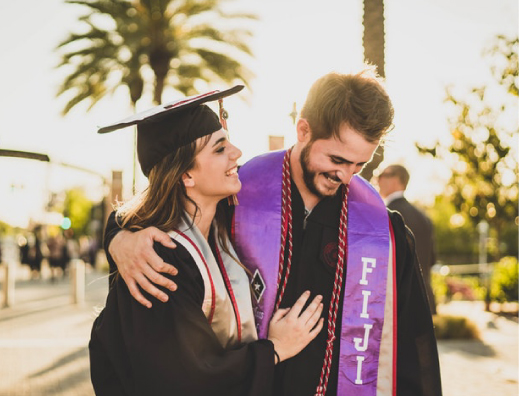Minimum Age
If you're drawn to the idea of a profession where your imagination is your only limitation, then chances are graphic design will be your type of career.
Our Bachelor doesn't just scratch the surface of visual aesthetic, but delves deep into the craft, providing you with a detailed understanding and hands-on experience across typography, pre-press, design for print, web and digital publishing and more.
At SAE you won’t find yourself in a lecture with 300 people or even in a traditional lecture at all. You’ll be in a studio environment with the latest Adobe Creative Suite. Your growth and development will be assessed through the completion of industry-based projects, not theoretical based essays. This will ultimately help you build up a body of work and portfolio to share with potential employers or first client.
In preparation for an industry that commands agility and adaptability, you’ll cut your creative teeth on projects initially in partnership with your course peers. As your skills develop and you work on more dynamic projects, you’ll apply your capabilities on cross-discipline projects. By the end of your course you could be collaborating with fellow students across SAE’s global network.
Ultimately, this is all about a qualification that will expand your career. There is work placement as part of your course, to provide practical experience and help build your network. We’ll also equip you with employability skills, giving you professional strategies in communication and self-promotion.
For those wanting to go the extra, and thousands of miles, you can complete up to two trimesters of your course at selected SAE campuses across the planet. Suddenly, real-world experience just went worldwide.
All of this is to ensure one very important thing – that you finish as a graphic designer, and not a graphic desig-nah.
The Graphic Design degree program is broken up into discrete stages, each designed to promote different skills.
Stage I – Foundational Skills Development
In Stage I, students will undertake a number of foundational design units which will give students the essential technical skills and knowledge not only relevant to the chosen discipline area, but also give students the skills required to collaborate with other creative media students and professionals in later stages of the Design course.
Stage II – Interdisciplinary Projects, Media and Cultural Studies
In Stage II we show students how their Graphic Design work contributes to and interacts with broader culture and media practice. This knowledge will enable students to work with a variety of other disciplines and artists and expand their potential on the global stage.
Students will complete a number of real-world projects with students not only in their own discipline, but also in all other SAE disciplines.
In the Graphic Design specialisation, students will hone the skills learnt in Stage I. Students will further explore typography, design for print and media and pre-press to create professional projects relevant to their industry and further develop strong project techniques. Students will discover additional facets of the design industry including photography and working with other professional tools to develop a full sense of the design industry in its entirety.
Stage III
Stage III is the final part. Here students will undertake an interdisciplinary project of their choice to be the final and most ambitious portfolio project that they will undertake.
Students will also finalise their studies by undertaking an elective module and completing a compulsory internship.
.jpg)

